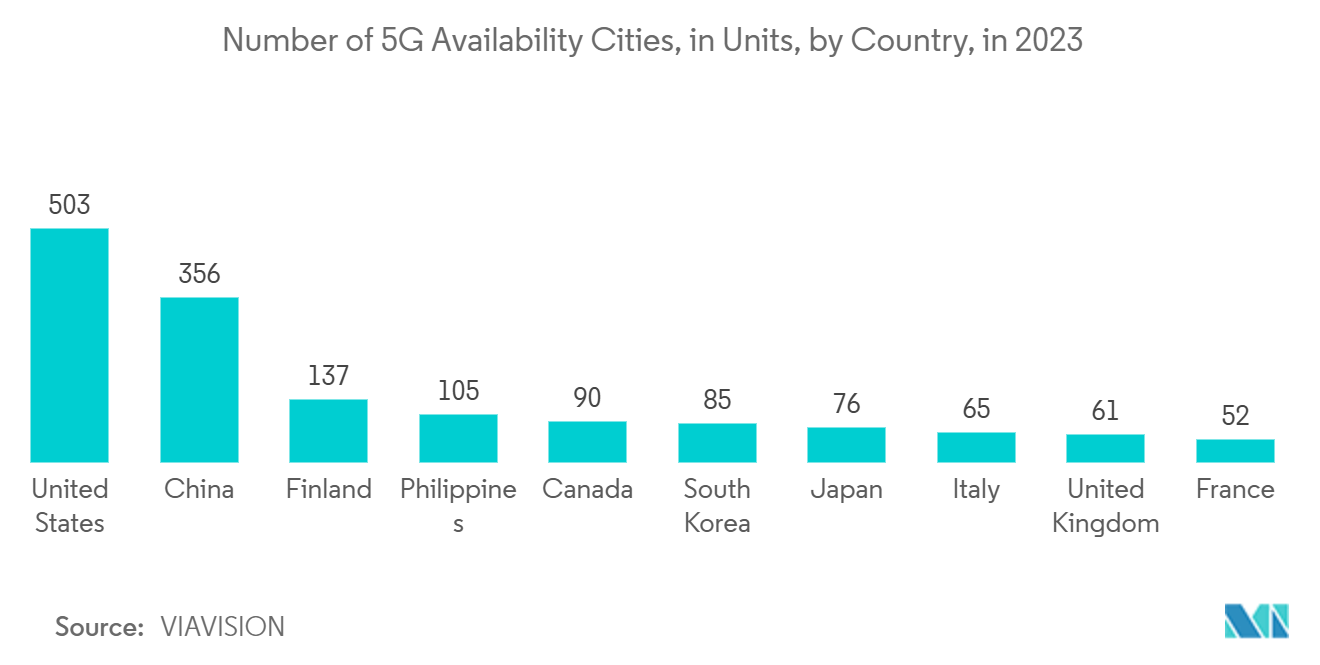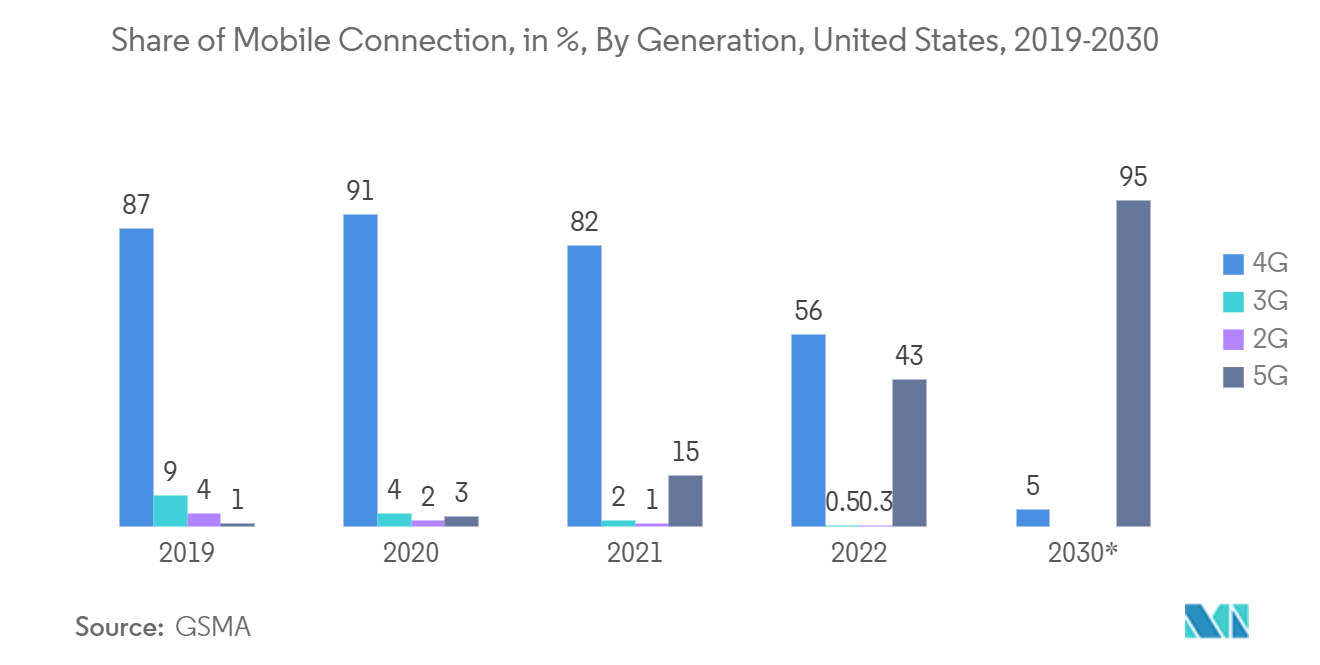Market Trends of US Mobile Virtual Network Operator (MVNO) Industry
The Reseller Segment is Expected to Hold a Significant Share in the Market
- Resellers act as intermediaries, selling services from a provider or operator while adhering to a standard service-level agreement (SLA). The overall service provider or operator issues a single bill. A reseller MVNO can operate under its own brand or co-brand with an MNO. Typically, these branded resellers come with established brand distribution channels or a substantial existing customer base, which they can leverage for sales. The mobile reseller model caters to companies aiming to offer customized mobile communication tariffs to their clientele. In contrast, the branded reseller model suits companies looking to enhance their brand with mobile communication services.
- Resellers are typically the most readily accepted type of MVNO by mobile network operators (MNOs), as MNOs retain control over most processes. This model allows MVNOs the potential to offer their own value-added services (VAS). With limited liability, this market segment presents fewer risks for MVNOs, but it also curtails revenue opportunities due to the lack of operational control. In this model, MVNOs partner with MNOs without holding any assets. This means they do not own the client, the infrastructure, or the SIM, nor do they have the ability to set prices. However, MVNOs do maintain control over distribution and branding functionalities.
- Reseller MVNOs benefit from quicker market entry and lower startup costs, as they rely on network operators to manage most infrastructure needs. However, these resellers still bear the expenses for marketing, sales, and distribution. With the increasing adoption of 4G and 5G technologies, the reseller model is poised to seize significant opportunities in the coming years. For example, Venn Mobile, a newly launched MVNO, operates under Teltik, a reseller aligned with T-Mobile's business strategy. Venn Mobile offers a monthly plan priced at USD 30, featuring unlimited talk, text, data, and a 50GB mobile hotspot allowance.
- Additionally, technological advancements have also played a crucial role. The proliferation of smartphones and the increasing mobile internet penetration have created fertile ground for MVNOs to offer innovative data-centric services. Also, the rollout of 4G and the anticipated expansion of 5G networks provide opportunities for reseller MVNOs to deliver high-speed data services without heavy infrastructure investments. Such initiatives are driving the market positively. According to VIAVISION, as of 2023, 5G network access was available in 503 cities in the United States, the most of any country globally.
- The latest wave of MVNOs is prioritizing the launch and upkeep of unique service capabilities. These capabilities blend a cloud-centric approach, API-driven communication service integration, and predominantly web-based self-care options, all while relying minimally on traditional communications infrastructure. By adopting lean and agile business processes, these MVNOs are not only competing with established operators but are also enhancing customer satisfaction and introducing price differentiation. They are leveraging PaaS for functions like billing, CRM integration, product catalog management, rating, invoicing, and bill formatting. This choice is strategic because these applications operate without direct end-user intervention and benefit from asynchronous background processing.

The Consumer Segment is Expected to Hold a Significant Share in the Market
- One of the main factors driving the growth of MVNOs in the United States is the increasing demand for low-cost mobile services. Many consumers in the country are price-sensitive and are looking for affordable alternatives to traditional mobile operators. MVNOs have responded to this demand by offering competitive pricing and flexible plans catering to different segments.
- Another factor contributing to the growth of MVNOs in the United States is the increasing availability of mobile internet services. According to the report by GSMA, by 2025, the United States is expected to have 252 million 5G connections. Further, by 2030, 5G connections are expected to account for 95% of all US connections. As the demand increases, more consumers seek affordable and reliable mobile internet services. MVNOs have responded to this demand by offering various plans and packages catering to different needs and budgets. Hence, consumers actively seek MVNO services in the country, which drives the demand.
- Further, the growth of MVNOs in the country is also driven by the increasing demand for data services. As more consumers in the United States use their mobile devices to access the internet, social media, and streaming services, MVNOs are responding by offering a range of data plans and packages that cater to different needs and budgets. According to Ericsson, there were an estimated 314.75 million 5G mobile subscriptions in North America in 2024, which is predicted to increase to 432.91 million by 2029.
- Consumers increasingly prioritize brands that cater directly to their needs for internet connectivity. In response, MVNOs tailor packages with varied data quality of service and 5G options, aligning closely with customer demands. This strategic move is expected to drive the growth of the market. Additionally, the diverse pricing strategies adopted by MVNOs are projected to further bolster the consumer segment's expansion during the forecast period.
- The demand for connected devices has surged as industries undergo radical technological transformations. The IoT and automotive sectors are leading the charge, presenting substantial opportunities for MVNOs. All four major telecom operators in the United States have invested heavily in developing IoT and NB-IoT infrastructures, with Verizon investing approximately USD 1 billion. The MVNO landscape is on the brink of a significant shift, especially with tech giants like Google making their foray into the market. These tech giants are leveraging the MVNO model to enhance the value of their current offerings.


